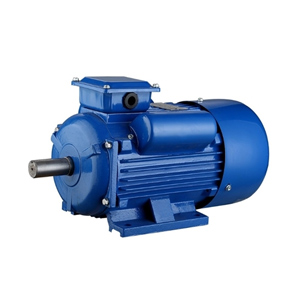Induction Motor: Working Principle, Features and Advantages
An induction motor refers to an AC motor that relies on electromagnetic induction between the stator and the rotor to induce a current in the rotor to realize electromechanical energy conversion. The stator of the induction motor consists of three parts: the stator core, the stator winding and the frame. Under normal circumstances, the rotor speed of the induction motor is always slightly lower or slightly higher than the speed of the rotating magnetic field, so it is also called an "asynchronous motor".
Three-phase squirrel cage induction motors are widely used as industrial drives due to their self-starting, reliable and economical advantages. Single-phase induction motors are widely used for smaller loads, such as household appliances such as fans. While induction motors have traditionally been used in fixed-speed service, they are increasingly used with variable frequency drives (VFDs) in variable-speed service. VFDs offer significant energy savings opportunities for existing and prospective induction motors in variable torque centrifugal fan, pump and compressor load applications. Squirrel cage induction motors are very widely used in fixed speed and variable frequency drive applications.
How do Induction Motors work?
Through the relative movement of the rotating magnetic field generated by the stator and the rotor winding, the rotor winding cuts the magnetic field lines to generate an induced electromotive force, so that an induced current is generated in the rotor winding. The induced current in the rotor winding interacts with the magnetic field to generate electromagnetic torque, which makes the rotor rotate. Because when the rotor speed gradually approaches the synchronous speed, the induced current gradually decreases, and the generated electromagnetic torque also decreases accordingly. When the asynchronous motor works in the motor state, the rotor speed is less than the synchronous speed. In order to describe the difference between the rotor speed n and the synchronous speed n1, the slip is introduced.
Features
- The induction motor uses auxiliary coils and capacitors not only during startup but also during operation. Although the starting torque is not very large, it has a simple structure, high reliability and high efficiency.
- It can run continuously.
- With the size of the load, the rated speed of the motor will also change.
- It is used in applications that do not require speed braking.
- Single-phase induction motor and three-phase induction motor are two types of induction motor.
- The single-phase motor is an induction motor with high efficiency and low noise.
- When the single-phase induction motor is running, the torque opposite to the rotation direction is generated, so it is impossible to change the direction in a short time. The direction of rotation should be reversed after the motor has come to a complete stop.
Rotation inversion
The method of changing the direction of rotation of an induction motor depends on whether it is a three-phase motor or a single-phase motor. In the three-phase case, the reversal can be achieved directly by exchanging the connections of any two-phase conductors.
In single-phase/split-phase motors, the reversal is done by changing the connection between the primary winding and the starting circuit. Some induction motors designed for specific applications may have the connection between the primary winding and the starting circuit internally wired so that the rotation cannot be changed. Also, a single-phase shaded pole motor has a fixed rotation and cannot be changed in direction except by disassembling the motor and reversing the stator so that it is in the opposite direction relative to the original rotor.
Advantages
- Small and lightweight
- It is easy to realize high-speed rotation with a speed exceeding 10000r/min
- High operating efficiency at high speed and low torque
- High torque at low speed and wide speed control range
- High reliability
- Low manufacturing cost
- Simplification of the control device
Disadvantages: lagging power factor, low light load power factor, slightly poor speed regulation performance.
Induction motors are a type of asynchronous motors. Since asynchronous motors are mainly induction motors, some people also define asynchronous motors as induction motors. But asynchronous motors include not only induction motors but also doubly-fed asynchronous motors and AC commutator motors.

